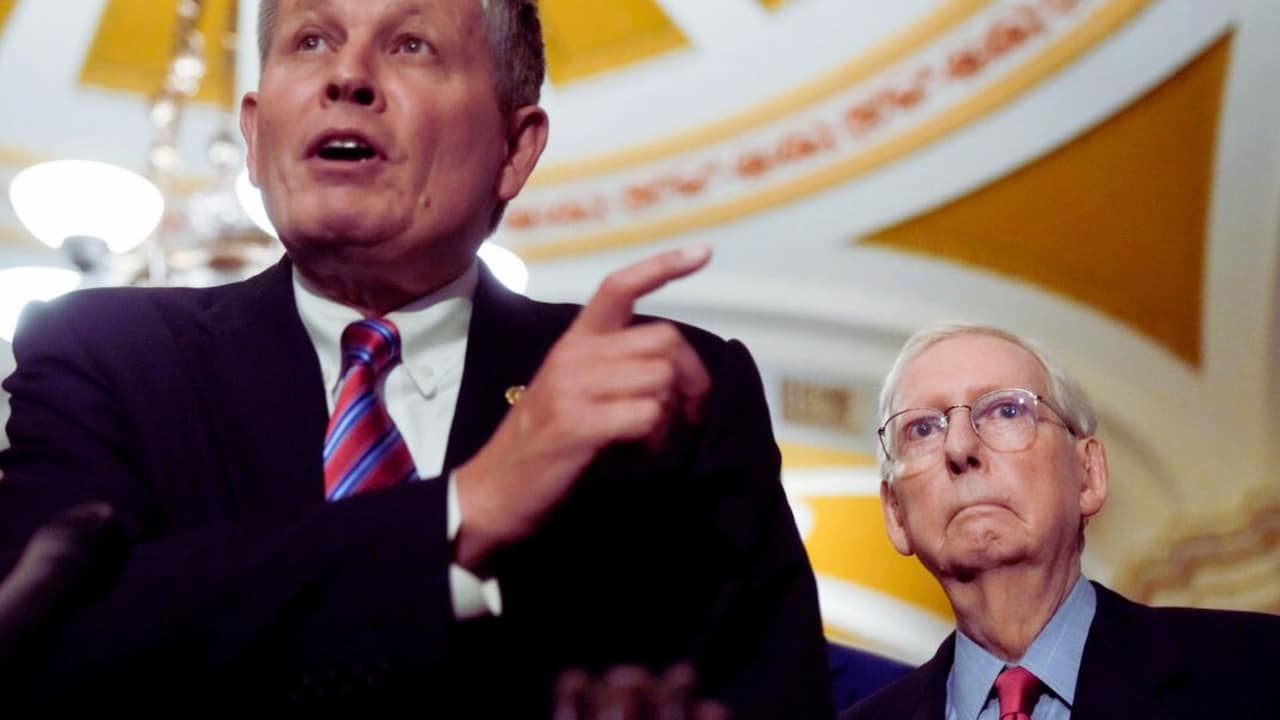The Senate GOP’s ‘Dream Map’ Meets Reality: A 2024 Electoral Landscape Analysis
As a political reporter covering the core of American democracy, I’m observing a fascinating transformation in what was once considered the Republicans’ ideal route to Senate dominance. Here’s why the GOP’s optimistic predictions are facing some sobering realities.
Mitch McConnell and Steve Daines spent 2023 confidently promoting what they called an ultra-favorable Senate map. Their excitement wasn’t without reason—Democrats were defending six seats in states where Trump had claimed at least one victory. Yet, with just weeks until Election Day, that initial Republican optimism has hit some unexpected turbulence.
The GOP’s grand strategy hinged on a seemingly foolproof plan: recruit wealthy candidates who could fund their own campaigns. This approach aimed to counter the Democrats’ impressive small-donor fundraising machine.
Jim Justice in West Virginia and Tim Sheehy in Montana emerged as notable successes of this strategy, with Justice’s entry even pushing Senator Joe Manchin to bow out of the race.
However, the self-funding candidate strategy has revealed some cracks. Take Eric Hovde in Wisconsin, who, despite pumping $20 million of his own money into his campaign, still faces tight competition.
Other wealthy recruits like Dave McCormick in Pennsylvania and Bernie Moreno in Ohio are grappling with their own challenges, from questions about state ties to controversial business dealings.
The financial landscape tells an intriguing story. Democratic candidates, powered by ActBlue’s small donor army, continue to maintain their fundraising edge.
This advantage becomes even more significant when you consider that candidate-sponsored ads get better rates than superPAC spending—a factor that’s particularly visible in states like Ohio, where Republicans have had to spend nearly four times as much as Democrats for similar advertising reach.
Perhaps most surprising is the emergence of competitive races in traditionally safe Republican territories. Ted Cruz in Texas and Republican incumbents in Florida and Nebraska are facing unexpectedly close contests, forcing the party to divert resources from offensive operations to defensive holds.
The internal dynamics within the Republican Party add another layer of complexity. Some incumbents have expressed frustration with the National Republican Senate’s new funding requirements, which demand candidates raise larger portions of their coordinated spending budgets.
As the election approaches, polling suggests Republicans might gain control of the Senate, but possibly with a narrower margin than initially projected. This outcome would fall short of the filibuster-proof majority some analysts had predicted following Trump’s success with white working-class voters.
Speaking on behalf of the Democratic Senatorial Campaign Committee, David Bergstein was blunt: “Senate Republicans’ candidate recruitment strategy isn’t delivering the results they anticipated.”
This sentiment echoes through Democratic circles, with Senator Michael Bennet suggesting that Republican recruitment challenges might persist until the party moves beyond the Trump era.
As we enter the final stretch of this electoral cycle, one thing becomes clear: even the most favorable map can’t guarantee victory without strong candidates and effective campaign execution.
In the upcoming weeks, we will see if the Republicans can convert their geographic advantages into Senate seats, or if Democrats can once again overcome the challenges in difficult areas.
